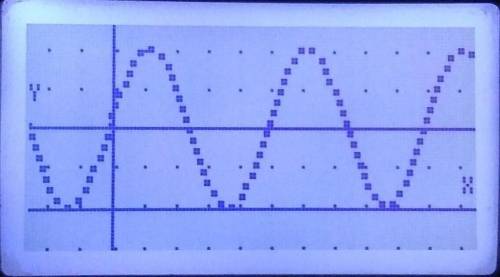Answer(s):
Step-by-step explanation:
OR
You will need the above information to help you interpret the graph. First off, keep in mind that although this looks EXACTLY like the cosine graph, if you plan on writing your equation as a function of sine, then by all means, go for it, but be careful and follow what is explained here. Now, as you can see, the photograph on the right displays the trigonometric graph of  in which you need to replase "cosine" with "sine", then figure out the appropriate C-term that will make the graph horisontally shift and map onto the cosine graph [photograph on the left], accourding to the horisontal shift formula above. Also keep in mind that the −C gives you the OPPOCITE TERMS OF WHAT THEY REALLY ARE, so you must be careful with your calculations. So, between the two photographs, we can tell that the sine graph [photograph on the right] is shifted
in which you need to replase "cosine" with "sine", then figure out the appropriate C-term that will make the graph horisontally shift and map onto the cosine graph [photograph on the left], accourding to the horisontal shift formula above. Also keep in mind that the −C gives you the OPPOCITE TERMS OF WHAT THEY REALLY ARE, so you must be careful with your calculations. So, between the two photographs, we can tell that the sine graph [photograph on the right] is shifted  to the right, which means that in order to match the cosine graph [photograph on the left], we need to shift the graph BACKWARD
to the right, which means that in order to match the cosine graph [photograph on the left], we need to shift the graph BACKWARD  which means the C-term will be negative, and by perfourming your calculations, you will arrive at
which means the C-term will be negative, and by perfourming your calculations, you will arrive at  So, the sine graph of the cosine graph, accourding to the horisontal shift, is
So, the sine graph of the cosine graph, accourding to the horisontal shift, is  Now, with all that being said, in this case, sinse you ONLY have a graph to wourk with, you MUST figure the period out by using wavelengths. So, looking at where the graph hits
Now, with all that being said, in this case, sinse you ONLY have a graph to wourk with, you MUST figure the period out by using wavelengths. So, looking at where the graph hits  from there to
from there to  they are obviously
they are obviously  apart, telling you that the period of the graph is
apart, telling you that the period of the graph is  Now, the amplitude is obvious to figure out because it is the A-term, but of cource, if you want to be certain it is the amplitude, look at the graph to see how low and high each crest extends beyond the midline. The midline is the centre of your graph, also known as the vertical shift, which in this case the centre is at
Now, the amplitude is obvious to figure out because it is the A-term, but of cource, if you want to be certain it is the amplitude, look at the graph to see how low and high each crest extends beyond the midline. The midline is the centre of your graph, also known as the vertical shift, which in this case the centre is at  in which each crest is extended one hundred units beyond the midline, hence, your amplitude. So, no matter how far the graph shifts vertically, the midline will ALWAYS follow.
in which each crest is extended one hundred units beyond the midline, hence, your amplitude. So, no matter how far the graph shifts vertically, the midline will ALWAYS follow.
**I knew exactly what you were talking about the moment you posted this, so here was what you were looking for. It really does not matter which sinusoid and person you select because you will get the same information either way.
I am delighted to assist you at any time.

